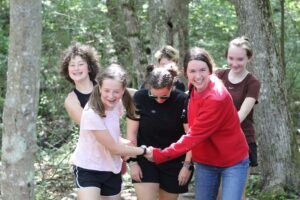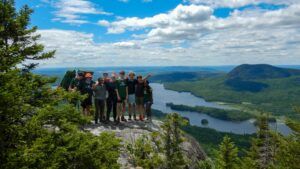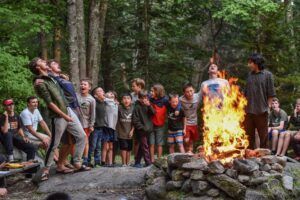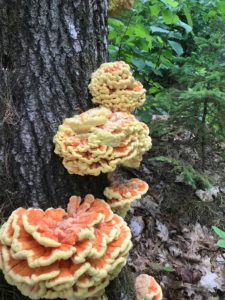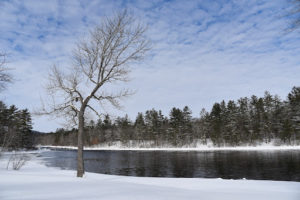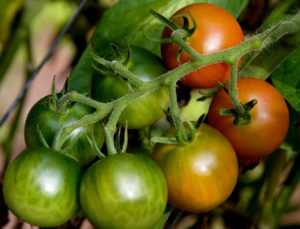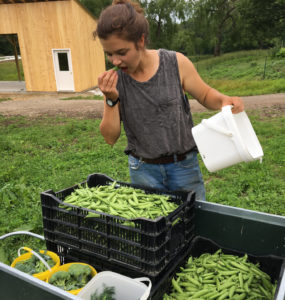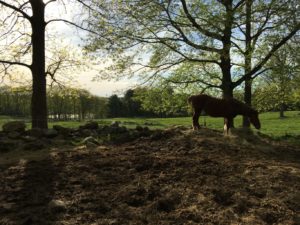This spring several Semester 52 students led by faculty members Pete Sniffen, Esther and James Kary, and Steve Kerchner have tapped 18 maple trees on Chewonki Neck to collect the sap for  syrup making. After the first three days of collecting, the group had amassed 21 gallons of sap. The sap was then frozen and the ice removed to concentrate the sugar content, which, by the way, is one of the methods originally used by Native Americans to make syrup. The sap was then boiled for about five hours over a wood fire before filtering and being finished in the kitchen. The final yield was just under a half gallon. Students were able to enjoy the syrup with their yogurt and oatmeal before leaving for spring break on Saturday morning!
syrup making. After the first three days of collecting, the group had amassed 21 gallons of sap. The sap was then frozen and the ice removed to concentrate the sugar content, which, by the way, is one of the methods originally used by Native Americans to make syrup. The sap was then boiled for about five hours over a wood fire before filtering and being finished in the kitchen. The final yield was just under a half gallon. Students were able to enjoy the syrup with their yogurt and oatmeal before leaving for spring break on Saturday morning!
 A little bit about maple syrup: during the course of the sugaring season, the taps remove about 10% of a tree’s sugar stores in 5-15 gallons of sap per tree (some trees produce more). The sap is then boiled to a temperature that is about 7°F above the boiling point of water so that the final composition of the syrup is approximately 62% sucrose, 34% water, 3% glucose and fructose, and 0.5% malic and other acids. Maple syrups are graded according to their color, flavor and sugar content. Grade A syrups are generally lighter and slightly less sweet whereas Grade B and C syrups usually have more pronounced caramel flavors and are darker colored.
A little bit about maple syrup: during the course of the sugaring season, the taps remove about 10% of a tree’s sugar stores in 5-15 gallons of sap per tree (some trees produce more). The sap is then boiled to a temperature that is about 7°F above the boiling point of water so that the final composition of the syrup is approximately 62% sucrose, 34% water, 3% glucose and fructose, and 0.5% malic and other acids. Maple syrups are graded according to their color, flavor and sugar content. Grade A syrups are generally lighter and slightly less sweet whereas Grade B and C syrups usually have more pronounced caramel flavors and are darker colored.
The going price for maple syrup these days is around $55.00-$65.00 a gallon. Liquid gold?
